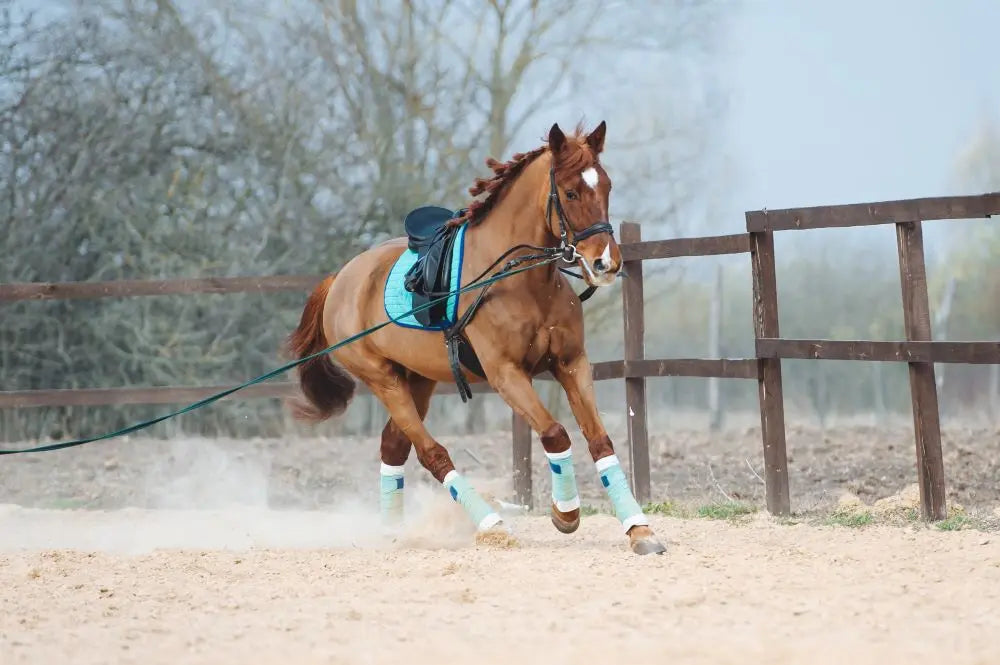From £6.99

The Equestrian's Guide to Bringing Horses Back into Work
Introduction to Reintroducing Horses to Activity
As the holiday season comes to an end, many equestrians are focused on the careful task of bringing their horses back into work. This process requires a methodical approach to ensure the horse’s well-being and performance. After a period of rest, horses need a structured routine to gradually rebuild their fitness levels. This journey from light exercise to full training should be carefully managed, encompassing physical conditioning, proper nutrition, and mental stimulation. A balanced reintroduction helps prevent injuries and promotes overall health. By adopting a systematic approach, we can effectively support our equine companions as they transition back into their work routines.
Initiating Slowly and Gradually Increasing Effort
The initial phase of reintroducing your horse to work should prioritise gentle activities. Hacking and walking in-hand are ideal starting points, as they promote fitness and muscle strength without overburdening the joints. Over a period of several weeks, incrementally increase the intensity and duration of these exercises. This approach allows your horse to gradually build stamina and resilience at a manageable pace. Ensuring a slow progression not only supports physical health but also reduces the risk of injury. As the horse adapts to the increased workload, you can start incorporating more demanding activities, always paying close attention to their comfort and response.
Emphasising Warm-Ups and Cool-Downs
In any well-structured exercise regimen, warm-ups and cool-downs are indispensable components. Warming up prepares your horse’s muscles for the upcoming activity, reducing the risk of strains or injuries. Begin with low-intensity activities, such as walking or light trotting, to gradually elevate the heart rate and increase blood flow to the muscles. This process also helps to loosen up stiff joints, making the body more flexible and responsive.
Cool-downs are equally important and should never be skipped. After the main exercise session, gradually decrease the intensity to help the horse’s body transition back to a resting state. Slow trotting and walking can be effective cool-down activities. This gradual reduction in activity helps to prevent the build-up of lactic acid, which can cause muscle stiffness and soreness. Additionally, cool-downs facilitate the removal of metabolic waste products from the muscles, aiding in quicker recovery.
By incorporating both warm-ups and cool-downs into your horse’s routine, you not only enhance their performance but also support their long-term health. These practices are essential for ensuring that your horse remains comfortable and injury-free as they return to a more demanding workload.
Conducting Regular Fitness Evaluations
Regularly assessing your horse's fitness is crucial for a successful reconditioning programme. Observations can help pinpoint signs such as puffing, sweating, or soreness, which may indicate the need to adjust their workload. As horses become fitter, they often exhibit increased energy levels, maintain consistent speeds, experience less sweating and panting, and recover more quickly after exercise, showing improved body condition and muscle tone.
During these evaluations, monitor how your horse responds to various exercises. For instance, note if they recover quickly after a workout or if they show any signs of discomfort. These assessments provide valuable insights into their physical state and help inform decisions about whether to increase or decrease the intensity of their exercise regimen.
Consider incorporating objective measures such as heart rate monitoring to track fitness improvements. This data can complement your visual assessments, offering a more comprehensive view of your horse’s progress.
Finally, remember to adjust your horse’s routine based on these evaluations. If you observe any signs of overexertion or strain, it may be necessary to scale back their workload temporarily. On the other hand, signs of enhanced fitness could indicate that your horse is ready for more challenging activities. Consistent fitness evaluations are integral to maintaining your horse’s overall well-being as they return to work.
Modifying Their Nutritional Intake
Adjusting a horse's diet to match their changing workload is essential for maintaining their health and condition. As their activity level increases, so too should the caloric intake and nutritional density of their feed. Gradually introduce dietary changes over a period of at least ten days to reduce the risk of developing colic. Pure Feed offers an adaptable range that simplifies these adjustments, ensuring your horse receives consistent, high-quality nutrition regardless of their training phase.
When scaling up the workload, opt for feeds that provide a balanced mix of energy, protein, vitamins, and minerals. This approach supports muscle development and overall vitality. Conversely, when reducing the workload, decrease the caloric intake to prevent weight gain and metabolic issues.
It’s also important to monitor your horse's body condition regularly. Look for signs of weight fluctuation or changes in coat quality, as these can indicate nutritional imbalances. By using a flexible feeding system like Pure Feed, you can seamlessly align your horse's diet with their evolving energy needs, fostering optimal performance and well-being throughout their training cycle.
Introducing Variety to Sustain Interest
Variety in an exercise routine is key to keeping your horse both mentally and physically engaged. Groundwork can enhance communication and build trust between you and your horse, while lunging can improve balance and suppleness. Polework, on the other hand, offers a dynamic way to develop coordination and strengthen muscles.
Introducing different activities not only combats boredom but also helps in developing a well-rounded athlete. Mixing up the exercises can stimulate your horse’s mind, making them more eager and attentive during training sessions. This mental stimulation is just as important as the physical aspect, contributing to a positive training environment.
For instance, incorporating polework into a lunging session can add an extra layer of challenge, promoting concentration and precision. Likewise, alternating between hacking and arena work can provide a refreshing change of scenery, which can be beneficial for both horse and rider.
Regularly varying the routine can also help identify and address any weaknesses or imbalances in your horse’s training. By exposing them to different types of work, you can ensure a more comprehensive approach to their fitness and development. This balanced regimen helps in maintaining their enthusiasm and motivation, crucial for long-term success.
Incorporate these diverse elements thoughtfully to maintain your horse's interest and support their holistic development. By doing so, you create a stimulating and rewarding environment that nurtures both their physical and mental well-being.
